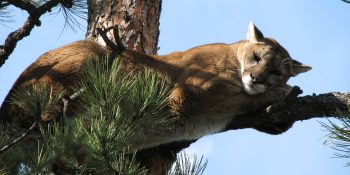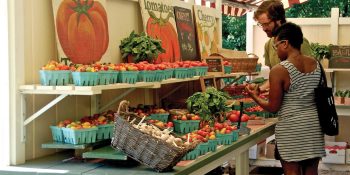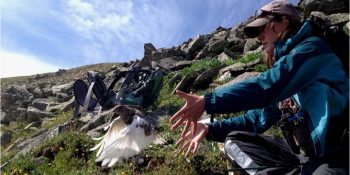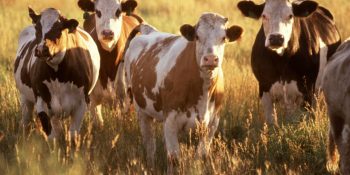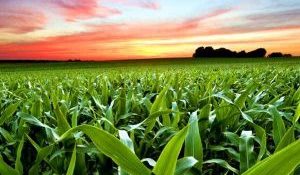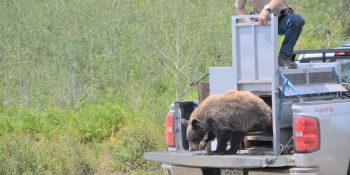DENVER – Colorado Parks and Wildlife is promoting a new four-part educational video series on mountain lions.
CPW Director Dan Prenzlow said this video series was produced to tell the history of the mountain lion and living with lions in our growing state.
“Mountain lions are a fascinating yet elusive animal, but when they do pop on the radar they make for big headlines,” Prenzlow said. “Sightings of mountain lions are increasing and we’ve had a couple high-profile attacks in the last two years. Thanks to sound management practices implemented over the years, mountain lions are doing quite well in Colorado. The challenge going forward will be balancing decreasing habitats and our exploding human populations, since we share the same spaces. This video series is meant to lay that all out.”
Mat Alldredge, a wildlife researcher for CPW who is a leading expert on mountain lions, sparked the idea to create a video series to share information on lions with the public.
“We’re trying to present our mountain lion research in an informative manner that is accessible and interesting to the public and not in a dry, boring research paper,” Alldredge said.
The video series is available on YouTube.
Episode 1 – Mountain lion biology and historical perspective
Episode 2 – Mountain lion habitat and human expansion
Episode 3 – Hunting
Episode 4 – What to do if you encounter a mountain lion
Alldredge has been studying mountain lions for CPW since 2006. His study of mountain lions along the Front Range helped us assess mountain lion population demographics, movements, habitat use, prey selectivity and human interactions along the urban-exurban corridor. From his research, wildlife officials gained a better understanding of what mountain lions are doing in the urban-wildland interface.
Listen to the Colorado Outdoors podcast episode with Alldredge discussing mountain lions.
Another focus in the series is the protection and management of mountain lions.
In the early 1900s, humans persecuted lions because of a lack of understanding, fear and interaction with their livelihood. The take of mountain lions was not only unregulated, it was encouraged with bounties paid.
That changed in 1965 when the mountain lion was viewed as a valued member of Colorado’s wildlife community. The Colorado Wildlife Commission changed the status of mountain lions from predator to game mammal and started protecting and managing them. Hunting seasons were established to regulate harvest to ensure populations were sustainable, allowing the species to recover after decades of widespread persecution.
CPW estimates there are between 3,800 to 4,400 independent/mature mountain lions, not including dependent young, in Colorado.
As human populations continue to expand into mountain lion habitats, human-lion interactions will continue to occur and make news headlines. With the increased use of new technology like home security cameras, people are able to see mountain lions far more often where in the past they would go undetected.
Of the 868 reports CPW received on mountain lions last year, about one in every nine of those reported seeing mountain lions on security or trail cameras around their homes.
“Ten years ago those items didn’t really exist in broad use, so that 100-plus sightings on security cameras are new and can’t really be compared to a time when we didn’t have Ring cameras everywhere,” said Mark Vieira, CPW’s Carnivore and Furbearer Program Manager. “Particularly around houses that aren’t in urban settings and are in mountain lion country, we’ve always had lions, especially at night, using areas around these houses. Homeowners just didn’t know it without cameras everywhere.”
Just over 17 percent of the mountain lion reports involved conflicts with livestock and 11 percent had deer as the source behind the call into CPW.
Images and videos used in the series were collected from across the state, from both residents and within the agency. David Neils of Wild Nature Media (wildnaturemedia.com) supplied many of the fascinating videos in episode one showing mountain lions in their wild state.
Ideas for future episodes in the mountain lion series include showcasing how wildlife officials come up with lion population estimates, predator-prey relationships and more general behavior attributes of mountain lions.
SPREAD THE NEWS
COMMENT, Like, Follow & SHARE @I70Scout
CURRENT EDITION
WEATHER & TRAFFIC PUZZLES RECENT NEWS ADVERTISE WITH US
